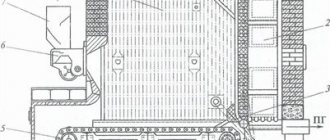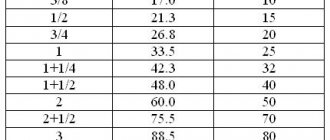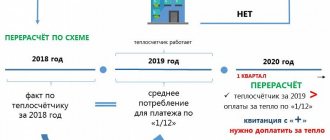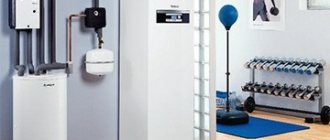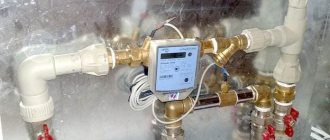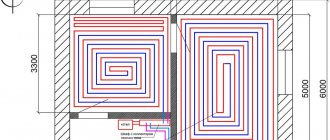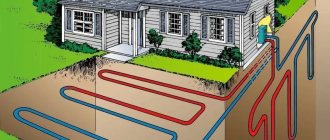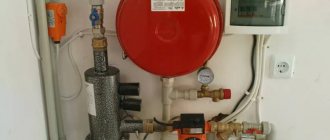Author of the article
Yulia Kuprina
Certified lawyer. Total work experience in the specialty is 13 years.
You can pay for thermal energy in different ways. The size of the fee depends not only on the number of batteries and the area of the apartment, but also on whether the apartment has heat meters. Let's figure out whether an individual heat meter is needed in an apartment building, where it is installed and how to take heat meter readings.
What information does the meter provide?
Thermal energy metering device is a complex mechanism that records signals from volumetric coolant flow and temperature sensors. The computing unit of the heat meter makes the appropriate calculations and provides results for the following parameters:
- the amount of heat energy used for a certain period (in gigacalories);
- amount of cooling energy (in gigacalories);
- thermal power (heat energy consumption per hour);
- volumetric flow rate of coolant (both in the supply pipe and in the return pipe: measured in cubic meters per hour);
- volume of coolant in each pipeline (in cubic meters);
- temperature of the coolant in the supply pipeline (in degrees Celsius);
- return coolant temperature (in degrees Celsius);
- temperature difference (in degrees Celsius);
- date Time.
What to consider when deciding to install a meter
Depending on your heating system wiring, some difficulties may arise. So, with a horizontal wiring diagram, it will be enough for you to install one meter at the entrance of the heating pipes to the apartment, but what if you have a vertical wiring diagram. In my apartment I have a vertical layout and 4 risers of heating pipes, and it turns out that when installing a heat meter, I will have to install a meter for each heating device. Naturally, this option is not profitable, but not everything is so bad. Manufacturers of heat meters produce distributors that measure coolant flow based on the difference between the surface temperature of the heating device and the internal air temperature. The cost of this equipment along with installation will be approximately from 3 to 7 thousand rubles, it all depends on the configuration of the equipment.
General rules for reading and calculating data
For a service provider company, one indicator is important - the amount of heat energy used during the reporting period (usually per month). Payment is calculated based on this indicator. Accordingly, at the end of the reporting period it is necessary to take readings and make a calculation.
On the front panel of the heat meter there is an electronic information board on which all parameters are displayed. The first is the amount of accumulated heat energy. Necessary:
- write down readings from the screen;
- Subtract from this figure the readings taken in the previous reporting period. This will be the amount of heat energy used for the current period.
How to correctly take and transmit readings for an apartment heat energy meter
Readings from residential heat meters should be taken by analogy with water meters. The only difference is that heat meters display several indicators on the indicator and to select the one you need, you should carefully read the operating instructions and strictly follow the manufacturer’s recommendations. After receiving the necessary information, the difference in readings for the previous and reporting periods should be entered into the receipt for payment for thermal energy, multiplied by the tariff established in the region, and the resulting amount should be paid.
Currently, modern heat metering devices are equipped with a built-in interface that allows you to read data automatically. For example, the domestically produced Kombik-T meter has a built-in radio antenna, which allows you to take readings from the device even without entering the apartment. It should be noted that a water meter (water meter) with a pulse output can be connected to such a device, which will allow you to take readings of water consumption (hot and cold) also without visual contact. Installing such metering devices will be a good solution for people who often go on business trips or trips and cannot personally meet the controller who comes to take readings.
From the information provided in this article, we can conclude that the procedure for taking and transmitting heat meter readings should be treated with a sufficient degree of responsibility.
Today I’ll talk about how to convert Gcal to kWh and back. The length, width, thickness of an object can be measured with a tape measure. The weight of an object can be determined by weighing it. But the amount of thermal energy cannot be measured either with a tape measure, or using scales or any other simple measuring instruments. Thermal energy can only be calculated mathematically. Like any quantity, thermal energy has its own units of measurement.
Meters, centimeters, millimeters, decimeters, kilometers, nanometers, etc. are units of measurement of length. As you may have guessed, kilograms, grams, tons, etc. are units of weight.
But Gcal, kWh, J are units of measurement of thermal energy. Moreover, just as meters can be converted into millimeters, and kilograms into grams, so Gigacalories can be easily recalculated by turning them into kWh and J. When you install your heat meter, you will have to learn how to convert Gcal into kWh and back.
You need to be able to do this in order to transfer the readings of this meter to your management company (management company). The fact is that some meters give readings only in Gcal, and some only in kWh. Management companies only accept meter readings in certain units. So we have to recalculate every month. Recounting is not a tricky business.
Let's say you want to convert 1 Gcal (one gigacalorie) into kWh, then you need to remember that one kWh is equal to 0.000860 Gcal
. Let's make a simple proportion:
1kWh = 0.000860 Gcal
Let's remember mathematics at school, and calculate what X is equal to Wh in this proportion: X = 1 kWh x 1 Gcal / 0.000860 Gcal = 1162.8 kWh
Or vice versa, you need to convert 1 kWh (one kilowatt hour) to Gcal. Again we make up the proportion, remembering that one kWh is equal to 0.000860 Gcal
.
1kWh = 0.000860 Gcal
Again we make calculations based on the usual proportion: X = 1 kW*h x 0.000860 Gcal / 1 kW*h = 0.000860 Gcal
So, we actually sorted out the conversion of Gcal to kWh. Everything is easy and very simple. Especially when you perform these simple calculations every month, first taking readings from the heat meter. But we will explain how to remove them in the next chapter.
By the way, I deliberately did not give any coefficients for converting Gcal to J and kWh to J. Simply because such a unit as J (joules) is practically not used now. It's like decimeters in the measurement of length. Decimeters seem to exist, you can and should know about them, and nothing more. The same epic with Joules.
Another subtlety you need to know about is the Kilo, Mega and Giga prefixes.
For example, kWh (kilowatt per hour), or MWh (megawatt per hour). Kilo means the number 1000, Mega means 1000000, but Giga means 1000000000.
1 kWh = 1000 Wh.
1 MWh = 1,000,000 Wh = 1,000 kWh.
1 Gcal = 1000000000 Cal = 1000 Mcal = 1000000 kcal.
Keeping a log book
The remaining parameters shown by the heat meter are auxiliary. However, with their help you can monitor the stability of both the meter itself and the heating system in the apartment. Therefore, it is advisable to keep a log of readings. A table is created in which all the parameters produced by the device are recorded. To take readings, you need to press the corresponding button on the front panel. The best option is to keep records every day, but it is also possible after a certain period of time.
When is heating system flushing required?
The frequency of flushing is always regulated by individual technical standards, but we can also talk about emergency situations, which include:
- Increasing the hydraulic resistance of the heating system to critical values. This danger can only be diagnosed using special equipment.
- Ineffective system operation. This is expressed in increased heating costs, uneven heating of appliances, as well as significant fuel consumption. When deposits form inside batteries and pipes, their efficiency decreases significantly.
- Replacement of a single section of pipes or several batteries.
- Preventative flushing of the heating system of the house. Ideally, it should be carried out upon completion or at the beginning of the heating season, once every 3 years.
Data reading methods
If you have a device with visual reading installed, you can only take readings directly from the information display. The consumer can record the data himself and then transfer it to the management company or service provider organization. In addition, employees of the management company or heating service can take readings. The consumer is obliged to provide them with access to the heat meter located in the apartment.
Remote data reading is also possible. To do this, the device must be equipped with one of the following modules:
- with pulse output. It is equipped with a sealed contact, the closure of which leads to the formation of an electrical pulse. This impulse is recorded by a reading device, which transmits information to an automated control center;
- with radio output. Information is transmitted over a radio channel independent of cellular communications;
- with digital output. The RS-485 interface is used. Data is transmitted over a wired communication line.
Remote readings are relevant if access to the heat meter is difficult or if a building-wide metering system is organized in an apartment building. Equipping devices with these modules allows not only to read information remotely, but also to store it in a non-volatile archive for further viewing, output to paper, and inclusion in reporting documentation.
Types of heat meters
All heating meters available for purchase are divided into the following types:
Tachometer or mechanical
Measures the amount of coolant passed through a cross-section of a pipe using a rotating part. The active part of the apparatus can be screw, turbine or in the form of an impeller. The devices are affordable and easy to use.
The weakness of such devices is their sensitivity to contamination and the deposition of dirt, rust, and water hammer inside the mechanism. For this purpose, the design includes a special magnetic mesh filter. Also, the devices are not capable of storing data collected per day.
Ultrasonic
More often used as a general meter for an apartment building. Has varieties:
- frequency,
- temporal,
- Doppler,
- correlational. It works on the principle of generating ultrasound passing through water.
The signal is generated by the transmitter and picked up by the receiver after passing through the water column. Guarantees high measurement accuracy only if the coolant is sufficiently clean.
Electromagnetic
It is distinguished by high accuracy of readings and cost. The operation of the device is based on the principle of passing a magnetic field through the coolant flow, which reacts to its condition. The device requires periodic maintenance and cleaning. Consists of a primary converter, an electronic unit and temperature sensors.
Vortex
It works on the principle of measuring the number and speed of vortices. It is not sensitive to blockages, but reacts to the appearance of air in the system. The device is installed in a horizontal position between two pipes.
What affects the accuracy of readings
Understanding how to take readings from the heat meter in an apartment is not enough. It is important to know what affects the accuracy of the readings and carefully monitor the parameters. This will help to eliminate failures in a timely manner and, accordingly, avoid overspending.
For example, a too small difference in temperature conditions in the supply and return pipelines may indicate that the extraction of heat energy is disrupted (not enough heat is supplied to the room) or that an excessive amount of coolant is supplied. Accordingly, if the heating system is not working correctly (the hydraulics are broken or there are other problems), you need to contact specialists to identify and fix the problem.
The difference in coolant flow rate in the supply and circulation pipes indicates the presence of a coolant leak or a malfunction of the heat meter. In this case, it is necessary to check the heating system for leaks. If this is not detected, diagnostics of the metering device is necessary.
If the date and time of the device’s built-in calendar fail, the computing mechanism is most likely faulty. A malfunction of the heat meter is also indicated by error data, display of any parameters in a negative format (for example, –12° C) or a complete absence of an image on the display.
Installation of an individual heat meter
Step one
. It is necessary to eliminate existing sources of heat loss, including cracks in windows, insufficiently insulated entrance doors, and frozen corners. Only after this the installation of a heat meter will result in significant savings.
Step two
. The management company (housing office, homeowners' association) must provide the apartment owner with technical conditions (TU) - they contain the requirements that must be met in order to connect. Typically, the text of the conditions takes up an A4 sheet. It certainly contains information about the temperature and pressure of the coolant entering the pipeline of a particular house.
Step three
. Knowing these parameters, you can start purchasing a heat meter from a company that operates legally. When purchasing a device, you must request a sales and cash receipt, a certificate confirming quality, rules and operating instructions.
Step four
Step five
. The thermal measuring device is installed by employees of a licensed organization specializing in this type of service.
When choosing a company, it is advisable to pay attention to a number of nuances:
- for the availability of information about the organization in the Unified State Register of Legal Entities;
- for the availability of a package of necessary documentation, including certificates, SRO approvals;
- availability of qualified specialists;
- for the availability of special equipment;
- to perform a full list of installation works;
- for the availability of a free specialist visit to the client’s apartment to inspect communications;
- for the presence of warranty obligations for the work performed.
Step six
How to check the operation of a heat meter
One of the main characteristics of a heat meter is its ability to automatically calculate the amount of thermal energy used. You can check this “mathematics” using a regular calculator. To do this, you need the following data for the reporting period:
- coolant flow in the supply pipe;
- temperature of the coolant in the supply pipe;
- return coolant temperature.
We calculate the temperature difference in the pipelines and multiply the resulting figure by the coolant flow. We get the amount of heat used. This result must match the parameter indicated on the heat meter screen.
Before the start of the heating season, it is also recommended to check the meter:
- activate the work by clicking on the appropriate button;
- record readings;
- turn on the heating radiators;
- After about an hour, check for changes in readings;
- If the data has not changed, error information has appeared, or the image is missing, contact the management company or heating supply organization.
How to correctly take and transmit readings for an apartment heat energy meter
Readings from residential heat meters should be taken by analogy with water meters. The only difference is that heat meters display several indicators on the indicator and to select the one you need, you should carefully read the operating instructions and strictly follow the manufacturer’s recommendations. After receiving the necessary information, the difference in readings for the previous and reporting periods should be entered into the receipt for payment for thermal energy, multiplied by the tariff established in the region, and the resulting amount should be paid.
Currently, modern heat metering devices are equipped with a built-in interface that allows you to read data automatically. For example, the domestically produced Kombik-T meter has a built-in radio antenna, which allows you to take readings from the device even without entering the apartment. It should be noted that a water meter (water meter) with a pulse output can be connected to such a device, which will allow you to take readings of water consumption (hot and cold) also without visual contact
Installing such metering devices will be a good solution for people who often go on business trips or trips and cannot personally meet the controller who comes to take readings. Please note that an individual heat meter can only be installed in apartments that have horizontal piping and separate coolant inlets. In houses where heating systems with vertical wiring are installed, individual meters are not installed
From the information provided in this article, we can conclude that the procedure for taking and transmitting heat meter readings should be treated with a sufficient degree of responsibility.
Currently, in almost all Russian regions, charges for utility services occur according to the same scenario: the tenant transmits readings from his metering devices to the management company, and the management company takes readings from communal meters and calculates the difference in readings between them and individual metering devices.
If this difference is not more than the standards for common areas (staircases, corridors, basements, etc.), it is proportionally divided among all residents. Otherwise, the management company pays the difference from its income. If the tenant does not submit readings from his metering devices to the management company in a timely manner, or his devices have expired the calibration interval, then for the first two months the management company charges payment for the resources consumed, taking into account the average consumption for the previous period. In the future, the management company calculates payments based on the standards for a specific region.
As a rule, standards significantly exceed the actual need for resources. For example, in central Russia in modern energy-efficient houses, real heat consumption is 2-2.5 times less than the standard
. Accordingly, timely transmission of testimony is, first of all, in the interests of the tenant himself.
The process of taking readings from a heat meter is described in. In this article we will tell you a little more about how to take readings from the SANEXT heating meter.
Heat meter verification
To avoid malfunctions in the operation of the heat energy meter, it is necessary to regularly check it. Data on the initial verification and the verification interval are indicated in the device passport. Initial verification is carried out by the manufacturer before release for sale. The inter-verification period is counted from the date of its implementation, and not from the moment of installation of the device. Subsequent verifications are carried out by specialized accredited organizations. Their implementation is confirmed by a certificate issued to the consumer.

